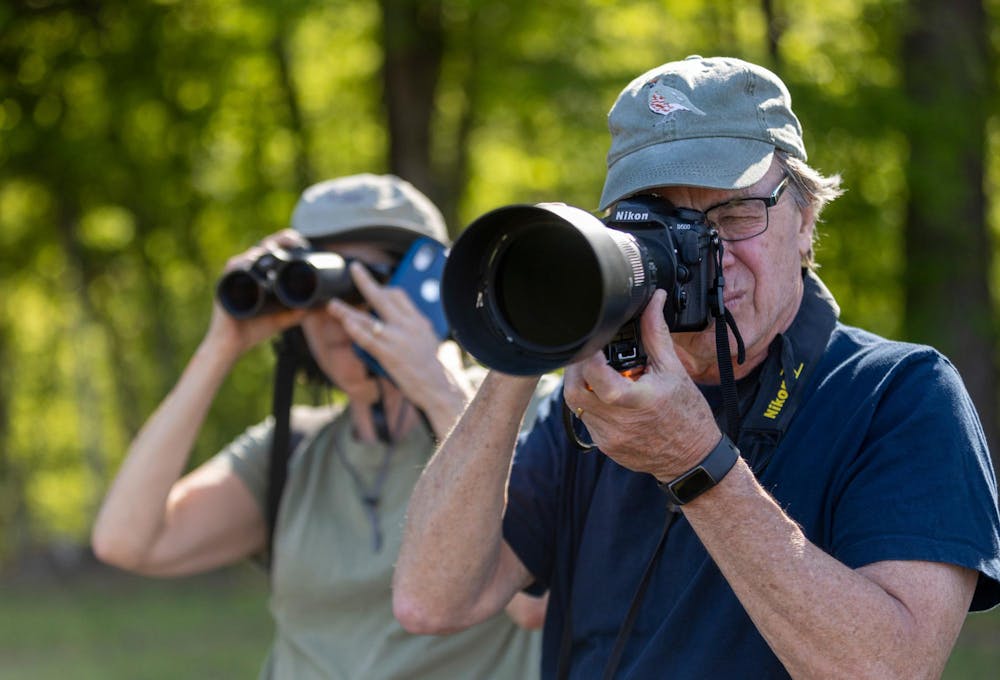Jim Capel packs binoculars, a notebook and a laser pointer when he leads a group birdwatching expedition.
Capel is a current member and former president of Chapel Hill Bird Club, and he leads and attends birding groups through parks across the Triangle, supporting novice and experienced "birders" alike. Some of these parks include Mason Farm Biological Reserve, the George and Julia Brumley Family Nature Preserve and Cane Creek Reservoir.
In the dead of summer, Capel said it is best to stick with parks with open fields to find birds like indigo buntings and blue grosbeaks. In the fall and winter, forests are great for wood thrushes and certain types of warblers, like the black-throated blue warbler, a personal favorite of Capel’s.
“There’s always a chance in a flock of geese that there will be something rare, if you look close," Capel said.
Bo Howes, the president of the Chapel Hill Bird Club and former president of the New Hope Bird Alliance, started birding in the 1970s with his grandfather. He said he didn’t start birding seriously until the early 2000s when he moved back to Chapel Hill.
“There’s a concept people call your ‘spark bird,’ so, what is the bird that sparks your interest,” Howes said. “It tends to be something that’s a little bit different, that’s not really that common, but something that has something interesting about it.”
Howes said his spark bird is the cedar waxwing, because their tail feathers look as though they are dipped in yellow paint. This bird specifically was a gateway into a passion he has nurtured over the years, he said.
“Now the other thing that people — nearly everyone — has is a nemesis bird," Howes said. “That’s the bird that you’d like to see that you haven’t seen.”
Howes said that his nemesis is the snowy owl, because they are rarely seen in North Carolina, but will sometimes visit the Outer Banks.



